HNBS 310 Financial Accounting Report: Transactions and Statements
VerifiedAdded on 2022/11/25
|27
|4872
|228
Report
AI Summary
This financial accounting report, prepared for HNBS 310, delves into various aspects of financial accounting. It begins by defining and categorizing different types of business transactions, including cash and credit transactions, as well as internal and external transactions. The report then provides journal entries and ledger accounts, culminating in a trial balance. A key section differentiates between financial statements and financial reports, outlining their content, governance, scope, and users. The report also examines fundamental accounting principles such as accrual, going concern, consistency, conservatism, cost, and economic entity principles. Furthermore, the report presents calculations, journal entries, and ledger accounts, as well as the preparation of profit and loss accounts and cash flow statements. The second scenario focuses on bank reconciliations, control accounts, and suspense accounts. It includes practical exercises such as preparing updated cash books, bank reconciliation statements, and journal entries, providing a comprehensive overview of financial accounting practices.
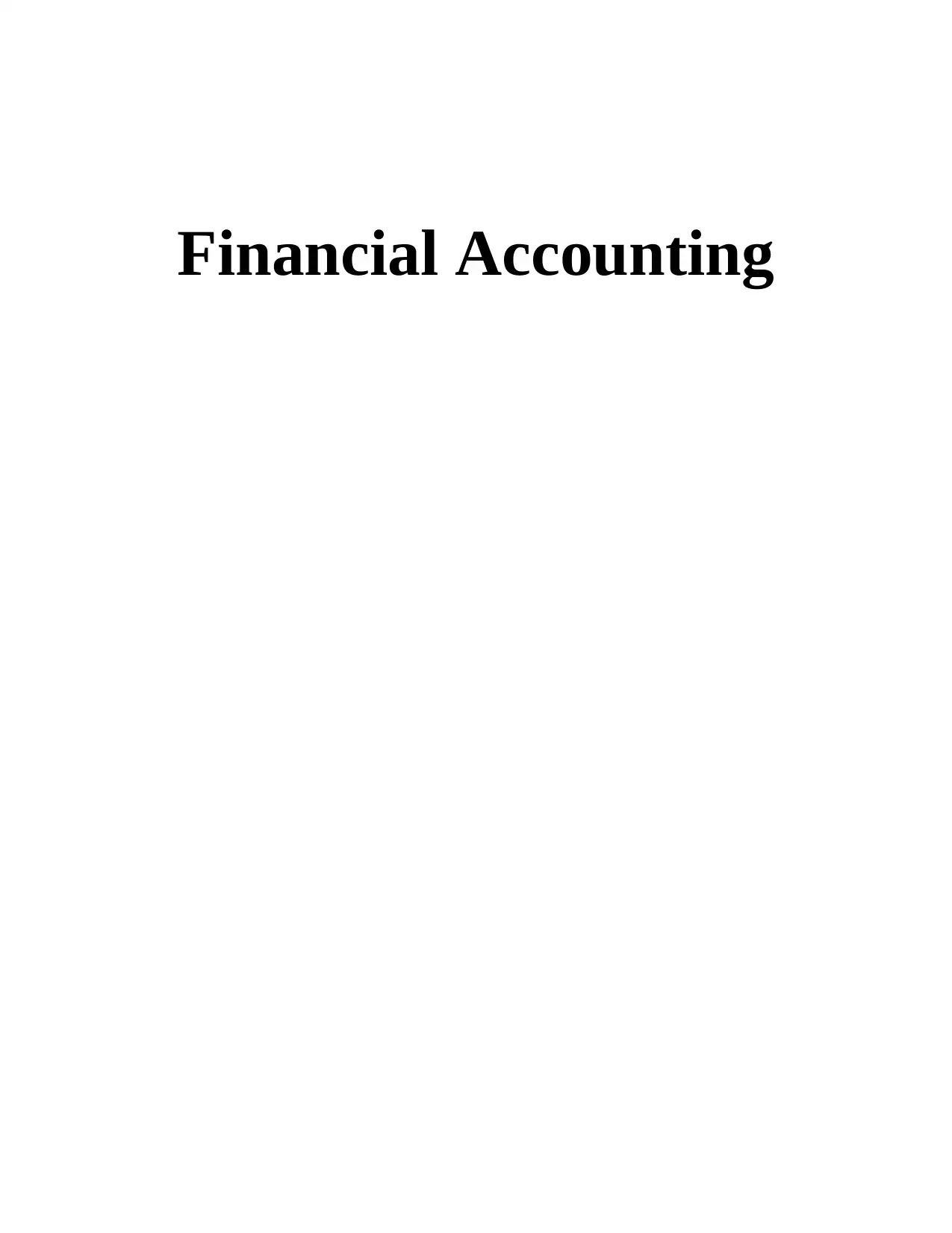
Financial Accounting
Paraphrase This Document
Need a fresh take? Get an instant paraphrase of this document with our AI Paraphraser

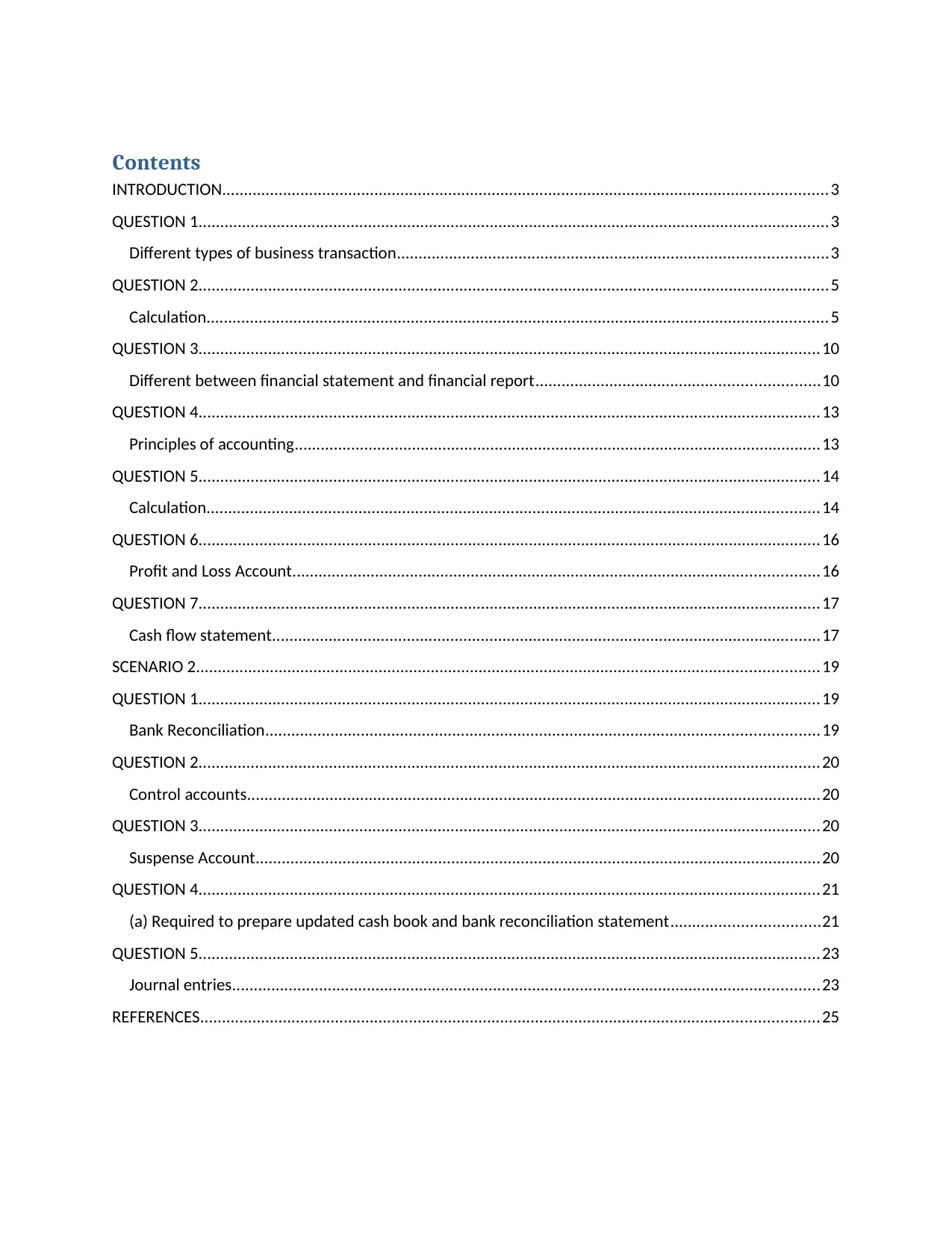
Contents
INTRODUCTION...........................................................................................................................................3
QUESTION 1.................................................................................................................................................3
Different types of business transaction...................................................................................................3
QUESTION 2.................................................................................................................................................5
Calculation...............................................................................................................................................5
QUESTION 3...............................................................................................................................................10
Different between financial statement and financial report.................................................................10
QUESTION 4...............................................................................................................................................13
Principles of accounting.........................................................................................................................13
QUESTION 5...............................................................................................................................................14
Calculation.............................................................................................................................................14
QUESTION 6...............................................................................................................................................16
Profit and Loss Account.........................................................................................................................16
QUESTION 7...............................................................................................................................................17
Cash flow statement..............................................................................................................................17
SCENARIO 2...............................................................................................................................................19
QUESTION 1...............................................................................................................................................19
Bank Reconciliation...............................................................................................................................19
QUESTION 2...............................................................................................................................................20
Control accounts....................................................................................................................................20
QUESTION 3...............................................................................................................................................20
Suspense Account..................................................................................................................................20
QUESTION 4...............................................................................................................................................21
(a) Required to prepare updated cash book and bank reconciliation statement..................................21
QUESTION 5...............................................................................................................................................23
Journal entries.......................................................................................................................................23
REFERENCES..............................................................................................................................................25
INTRODUCTION...........................................................................................................................................3
QUESTION 1.................................................................................................................................................3
Different types of business transaction...................................................................................................3
QUESTION 2.................................................................................................................................................5
Calculation...............................................................................................................................................5
QUESTION 3...............................................................................................................................................10
Different between financial statement and financial report.................................................................10
QUESTION 4...............................................................................................................................................13
Principles of accounting.........................................................................................................................13
QUESTION 5...............................................................................................................................................14
Calculation.............................................................................................................................................14
QUESTION 6...............................................................................................................................................16
Profit and Loss Account.........................................................................................................................16
QUESTION 7...............................................................................................................................................17
Cash flow statement..............................................................................................................................17
SCENARIO 2...............................................................................................................................................19
QUESTION 1...............................................................................................................................................19
Bank Reconciliation...............................................................................................................................19
QUESTION 2...............................................................................................................................................20
Control accounts....................................................................................................................................20
QUESTION 3...............................................................................................................................................20
Suspense Account..................................................................................................................................20
QUESTION 4...............................................................................................................................................21
(a) Required to prepare updated cash book and bank reconciliation statement..................................21
QUESTION 5...............................................................................................................................................23
Journal entries.......................................................................................................................................23
REFERENCES..............................................................................................................................................25
⊘ This is a preview!⊘
Do you want full access?
Subscribe today to unlock all pages.

Trusted by 1+ million students worldwide
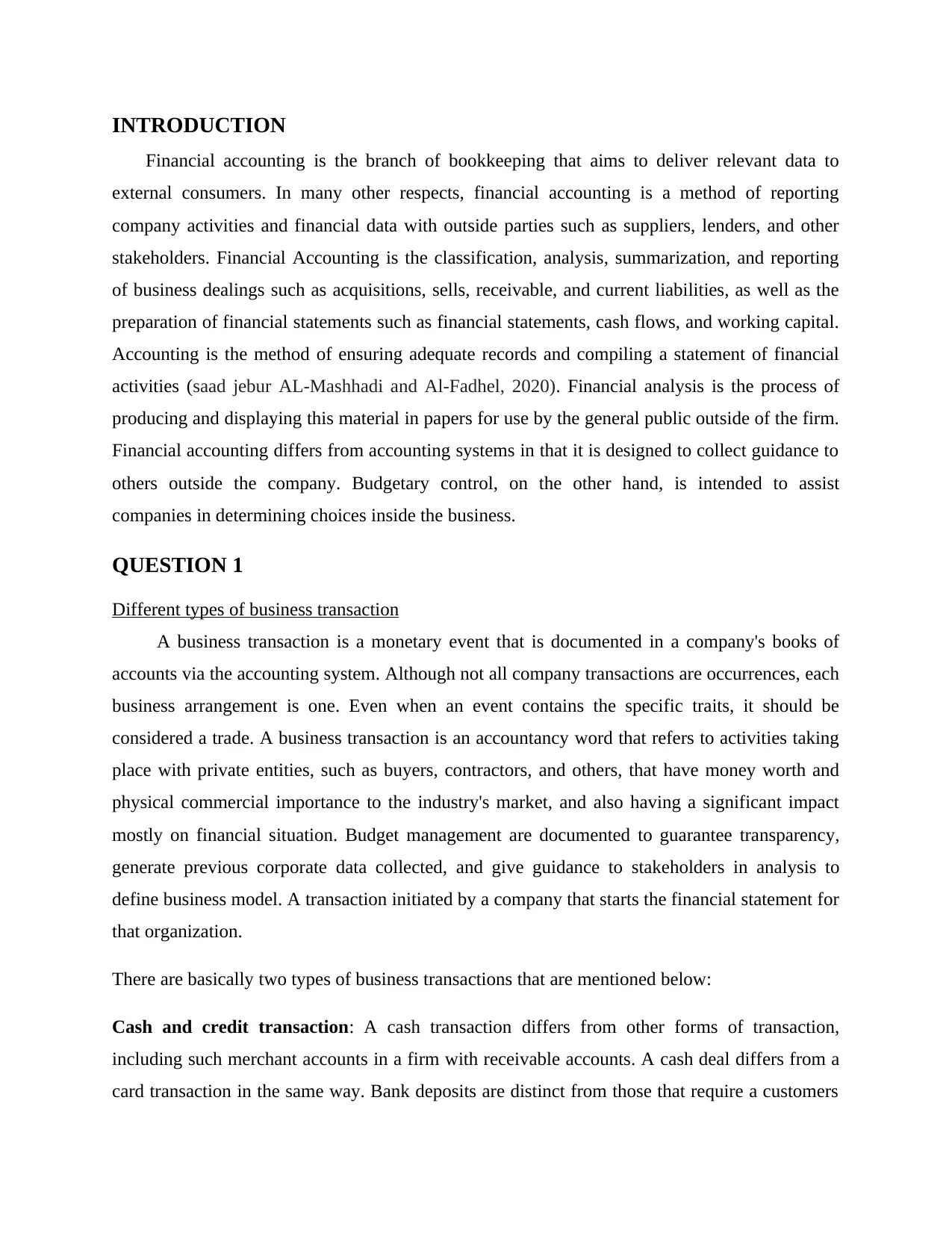
INTRODUCTION
Financial accounting is the branch of bookkeeping that aims to deliver relevant data to
external consumers. In many other respects, financial accounting is a method of reporting
company activities and financial data with outside parties such as suppliers, lenders, and other
stakeholders. Financial Accounting is the classification, analysis, summarization, and reporting
of business dealings such as acquisitions, sells, receivable, and current liabilities, as well as the
preparation of financial statements such as financial statements, cash flows, and working capital.
Accounting is the method of ensuring adequate records and compiling a statement of financial
activities (saad jebur AL-Mashhadi and Al-Fadhel, 2020). Financial analysis is the process of
producing and displaying this material in papers for use by the general public outside of the firm.
Financial accounting differs from accounting systems in that it is designed to collect guidance to
others outside the company. Budgetary control, on the other hand, is intended to assist
companies in determining choices inside the business.
QUESTION 1
Different types of business transaction
A business transaction is a monetary event that is documented in a company's books of
accounts via the accounting system. Although not all company transactions are occurrences, each
business arrangement is one. Even when an event contains the specific traits, it should be
considered a trade. A business transaction is an accountancy word that refers to activities taking
place with private entities, such as buyers, contractors, and others, that have money worth and
physical commercial importance to the industry's market, and also having a significant impact
mostly on financial situation. Budget management are documented to guarantee transparency,
generate previous corporate data collected, and give guidance to stakeholders in analysis to
define business model. A transaction initiated by a company that starts the financial statement for
that organization.
There are basically two types of business transactions that are mentioned below:
Cash and credit transaction: A cash transaction differs from other forms of transaction,
including such merchant accounts in a firm with receivable accounts. A cash deal differs from a
card transaction in the same way. Bank deposits are distinct from those that require a customers
Financial accounting is the branch of bookkeeping that aims to deliver relevant data to
external consumers. In many other respects, financial accounting is a method of reporting
company activities and financial data with outside parties such as suppliers, lenders, and other
stakeholders. Financial Accounting is the classification, analysis, summarization, and reporting
of business dealings such as acquisitions, sells, receivable, and current liabilities, as well as the
preparation of financial statements such as financial statements, cash flows, and working capital.
Accounting is the method of ensuring adequate records and compiling a statement of financial
activities (saad jebur AL-Mashhadi and Al-Fadhel, 2020). Financial analysis is the process of
producing and displaying this material in papers for use by the general public outside of the firm.
Financial accounting differs from accounting systems in that it is designed to collect guidance to
others outside the company. Budgetary control, on the other hand, is intended to assist
companies in determining choices inside the business.
QUESTION 1
Different types of business transaction
A business transaction is a monetary event that is documented in a company's books of
accounts via the accounting system. Although not all company transactions are occurrences, each
business arrangement is one. Even when an event contains the specific traits, it should be
considered a trade. A business transaction is an accountancy word that refers to activities taking
place with private entities, such as buyers, contractors, and others, that have money worth and
physical commercial importance to the industry's market, and also having a significant impact
mostly on financial situation. Budget management are documented to guarantee transparency,
generate previous corporate data collected, and give guidance to stakeholders in analysis to
define business model. A transaction initiated by a company that starts the financial statement for
that organization.
There are basically two types of business transactions that are mentioned below:
Cash and credit transaction: A cash transaction differs from other forms of transaction,
including such merchant accounts in a firm with receivable accounts. A cash deal differs from a
card transaction in the same way. Bank deposits are distinct from those that require a customers
Paraphrase This Document
Need a fresh take? Get an instant paraphrase of this document with our AI Paraphraser
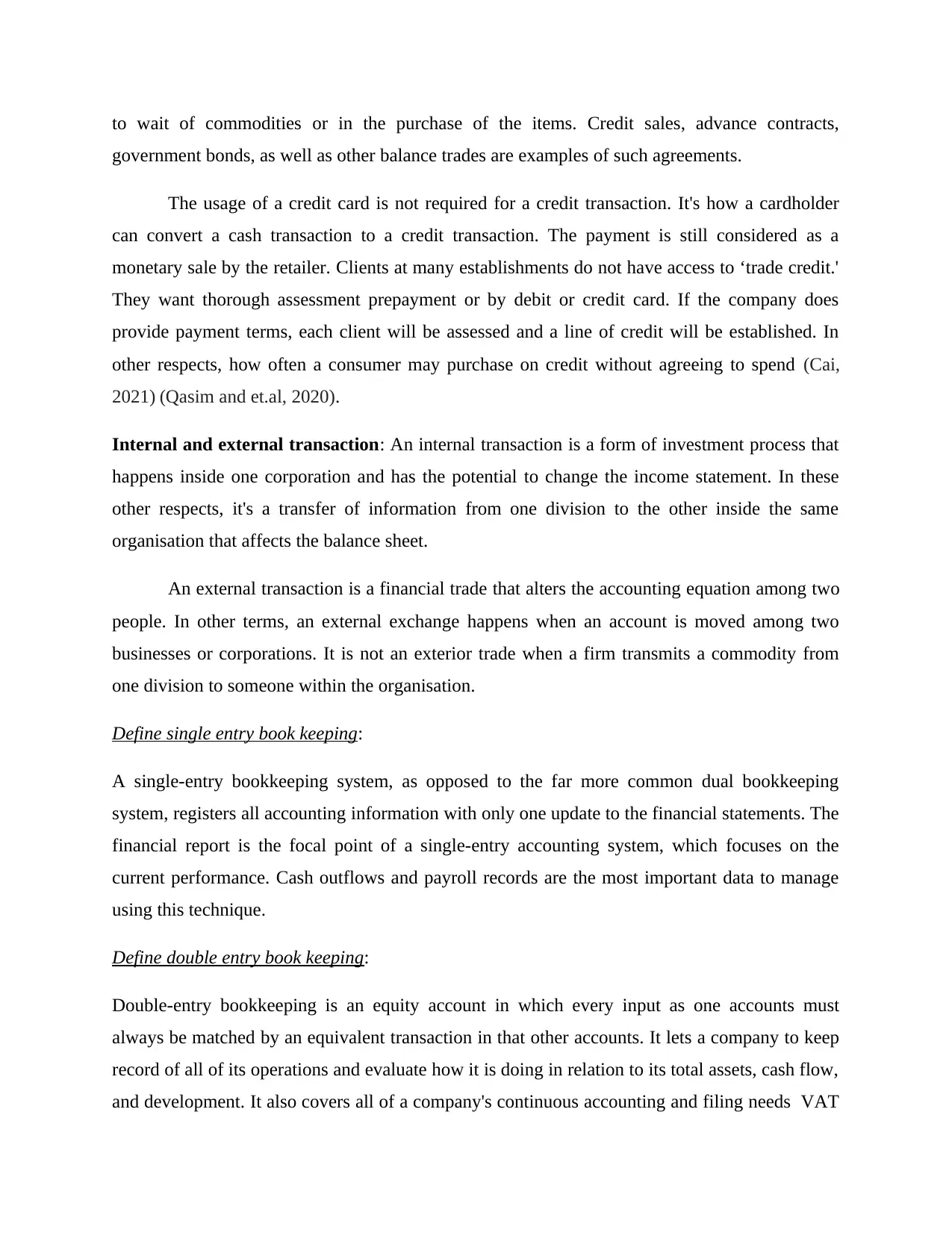
to wait of commodities or in the purchase of the items. Credit sales, advance contracts,
government bonds, as well as other balance trades are examples of such agreements.
The usage of a credit card is not required for a credit transaction. It's how a cardholder
can convert a cash transaction to a credit transaction. The payment is still considered as a
monetary sale by the retailer. Clients at many establishments do not have access to ‘trade credit.'
They want thorough assessment prepayment or by debit or credit card. If the company does
provide payment terms, each client will be assessed and a line of credit will be established. In
other respects, how often a consumer may purchase on credit without agreeing to spend (Cai,
2021) (Qasim and et.al, 2020).
Internal and external transaction: An internal transaction is a form of investment process that
happens inside one corporation and has the potential to change the income statement. In these
other respects, it's a transfer of information from one division to the other inside the same
organisation that affects the balance sheet.
An external transaction is a financial trade that alters the accounting equation among two
people. In other terms, an external exchange happens when an account is moved among two
businesses or corporations. It is not an exterior trade when a firm transmits a commodity from
one division to someone within the organisation.
Define single entry book keeping:
A single-entry bookkeeping system, as opposed to the far more common dual bookkeeping
system, registers all accounting information with only one update to the financial statements. The
financial report is the focal point of a single-entry accounting system, which focuses on the
current performance. Cash outflows and payroll records are the most important data to manage
using this technique.
Define double entry book keeping:
Double-entry bookkeeping is an equity account in which every input as one accounts must
always be matched by an equivalent transaction in that other accounts. It lets a company to keep
record of all of its operations and evaluate how it is doing in relation to its total assets, cash flow,
and development. It also covers all of a company's continuous accounting and filing needs VAT
government bonds, as well as other balance trades are examples of such agreements.
The usage of a credit card is not required for a credit transaction. It's how a cardholder
can convert a cash transaction to a credit transaction. The payment is still considered as a
monetary sale by the retailer. Clients at many establishments do not have access to ‘trade credit.'
They want thorough assessment prepayment or by debit or credit card. If the company does
provide payment terms, each client will be assessed and a line of credit will be established. In
other respects, how often a consumer may purchase on credit without agreeing to spend (Cai,
2021) (Qasim and et.al, 2020).
Internal and external transaction: An internal transaction is a form of investment process that
happens inside one corporation and has the potential to change the income statement. In these
other respects, it's a transfer of information from one division to the other inside the same
organisation that affects the balance sheet.
An external transaction is a financial trade that alters the accounting equation among two
people. In other terms, an external exchange happens when an account is moved among two
businesses or corporations. It is not an exterior trade when a firm transmits a commodity from
one division to someone within the organisation.
Define single entry book keeping:
A single-entry bookkeeping system, as opposed to the far more common dual bookkeeping
system, registers all accounting information with only one update to the financial statements. The
financial report is the focal point of a single-entry accounting system, which focuses on the
current performance. Cash outflows and payroll records are the most important data to manage
using this technique.
Define double entry book keeping:
Double-entry bookkeeping is an equity account in which every input as one accounts must
always be matched by an equivalent transaction in that other accounts. It lets a company to keep
record of all of its operations and evaluate how it is doing in relation to its total assets, cash flow,
and development. It also covers all of a company's continuous accounting and filing needs VAT
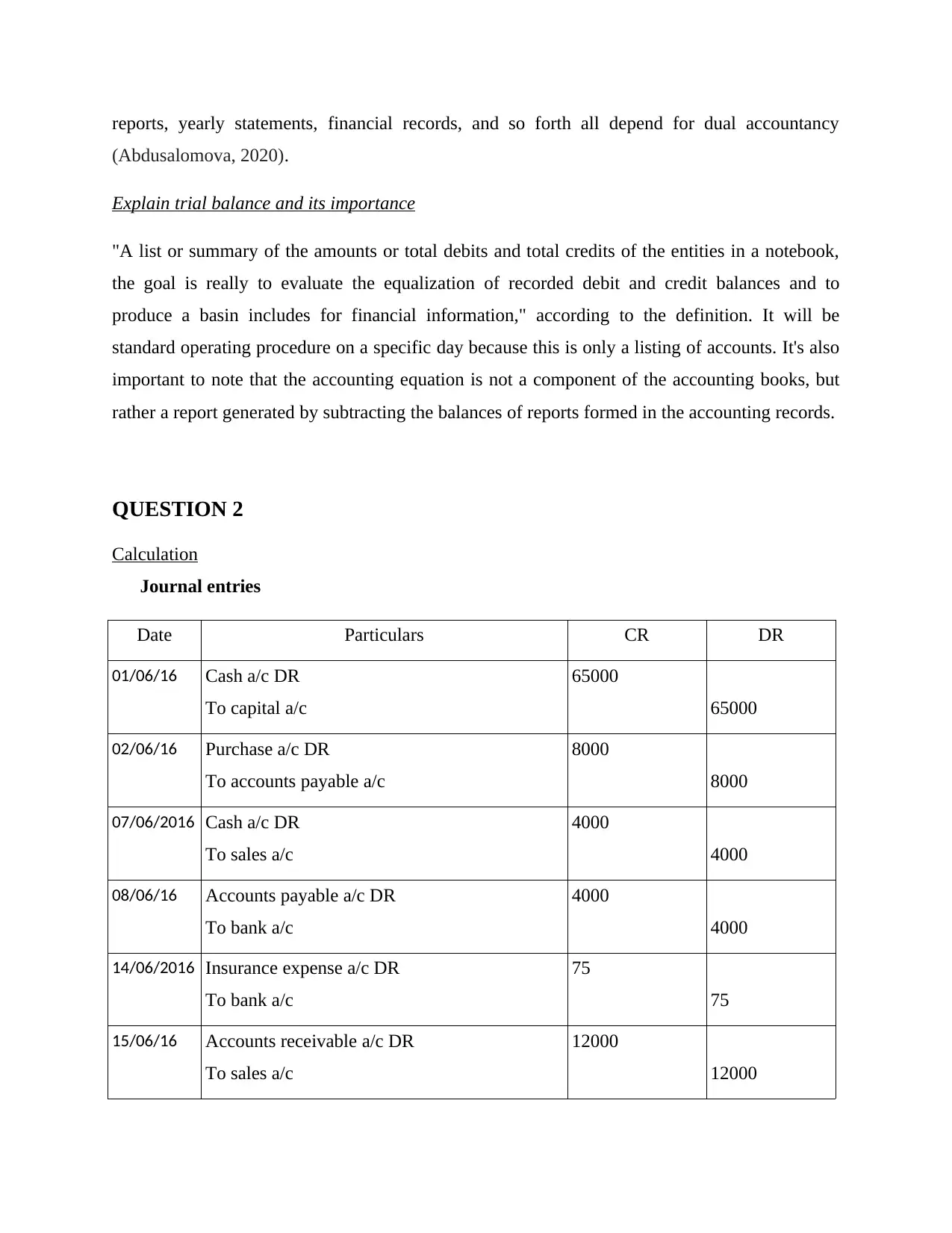
reports, yearly statements, financial records, and so forth all depend for dual accountancy
(Abdusalomova, 2020).
Explain trial balance and its importance
"A list or summary of the amounts or total debits and total credits of the entities in a notebook,
the goal is really to evaluate the equalization of recorded debit and credit balances and to
produce a basin includes for financial information," according to the definition. It will be
standard operating procedure on a specific day because this is only a listing of accounts. It's also
important to note that the accounting equation is not a component of the accounting books, but
rather a report generated by subtracting the balances of reports formed in the accounting records.
QUESTION 2
Calculation
Journal entries
Date Particulars CR DR
01/06/16 Cash a/c DR
To capital a/c
65000
65000
02/06/16 Purchase a/c DR
To accounts payable a/c
8000
8000
07/06/2016 Cash a/c DR
To sales a/c
4000
4000
08/06/16 Accounts payable a/c DR
To bank a/c
4000
4000
14/06/2016 Insurance expense a/c DR
To bank a/c
75
75
15/06/16 Accounts receivable a/c DR
To sales a/c
12000
12000
(Abdusalomova, 2020).
Explain trial balance and its importance
"A list or summary of the amounts or total debits and total credits of the entities in a notebook,
the goal is really to evaluate the equalization of recorded debit and credit balances and to
produce a basin includes for financial information," according to the definition. It will be
standard operating procedure on a specific day because this is only a listing of accounts. It's also
important to note that the accounting equation is not a component of the accounting books, but
rather a report generated by subtracting the balances of reports formed in the accounting records.
QUESTION 2
Calculation
Journal entries
Date Particulars CR DR
01/06/16 Cash a/c DR
To capital a/c
65000
65000
02/06/16 Purchase a/c DR
To accounts payable a/c
8000
8000
07/06/2016 Cash a/c DR
To sales a/c
4000
4000
08/06/16 Accounts payable a/c DR
To bank a/c
4000
4000
14/06/2016 Insurance expense a/c DR
To bank a/c
75
75
15/06/16 Accounts receivable a/c DR
To sales a/c
12000
12000
⊘ This is a preview!⊘
Do you want full access?
Subscribe today to unlock all pages.

Trusted by 1+ million students worldwide

16/06/16 Purchase a/c DR
To accounts payable a/c
10000
10000
18/06/16 Computer equipment a/c DR
To cash a/c
3000
3000
20/06/16 Rent a/c DR
To bank a/c
150
150
21/06/16 Cash a/c DR
To sales a/c
10000
10000
25/06/16 Cash in hand
To bank a/c
100
100
30/06/16 Stationary a/c DR
To cash in hand a/c
30
30
Ledger accounts
To accounts payable a/c
10000
10000
18/06/16 Computer equipment a/c DR
To cash a/c
3000
3000
20/06/16 Rent a/c DR
To bank a/c
150
150
21/06/16 Cash a/c DR
To sales a/c
10000
10000
25/06/16 Cash in hand
To bank a/c
100
100
30/06/16 Stationary a/c DR
To cash in hand a/c
30
30
Ledger accounts
Paraphrase This Document
Need a fresh take? Get an instant paraphrase of this document with our AI Paraphraser
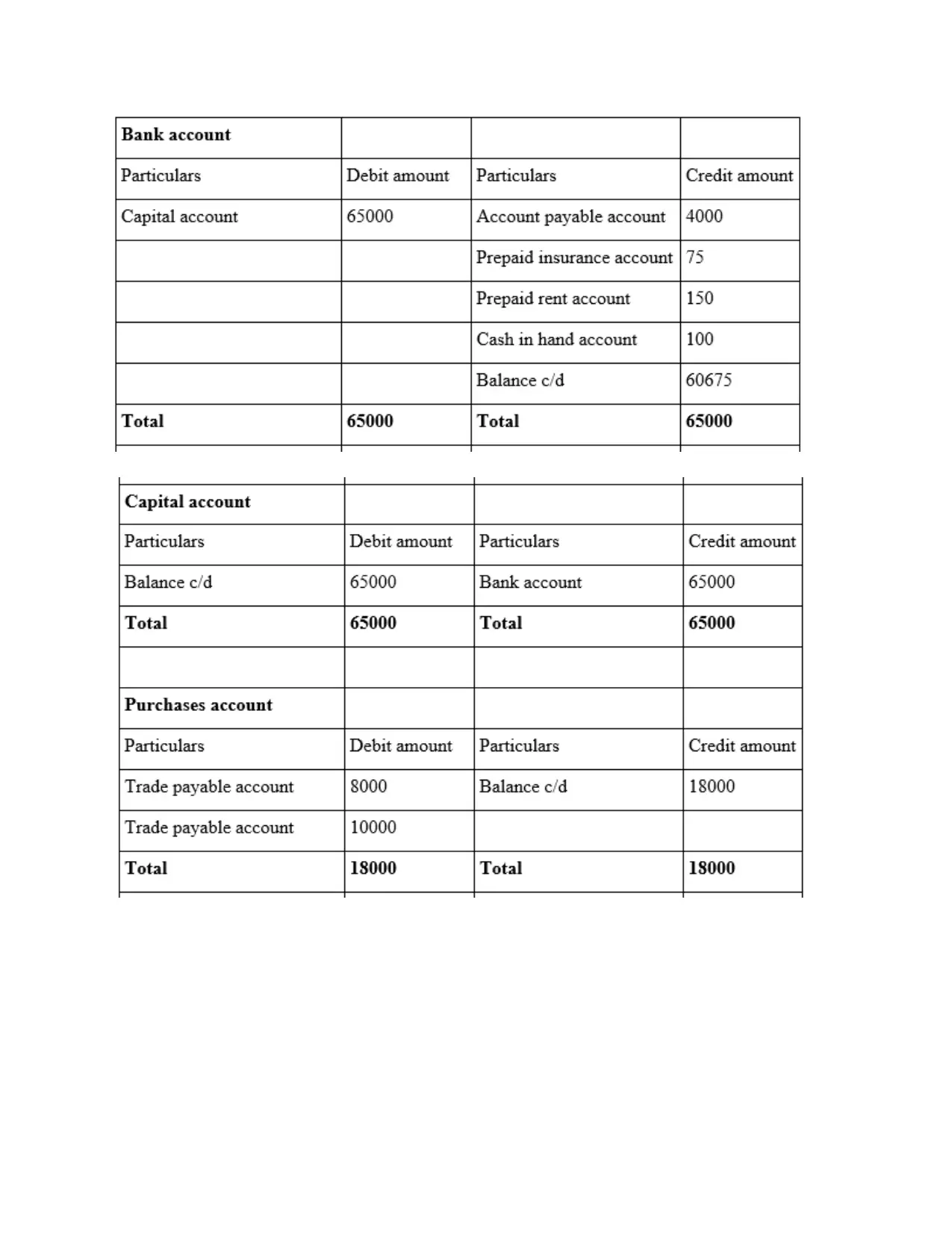
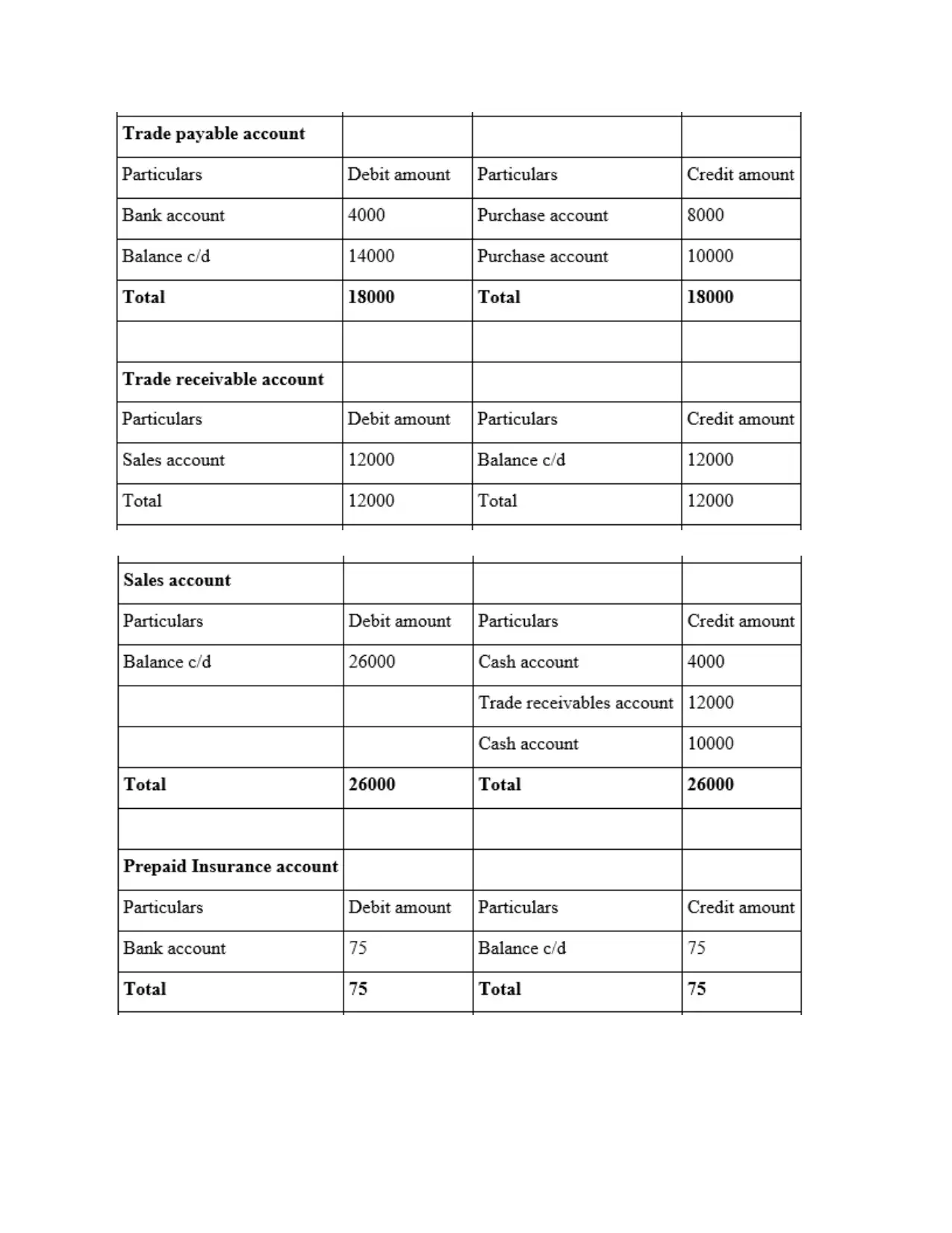
⊘ This is a preview!⊘
Do you want full access?
Subscribe today to unlock all pages.

Trusted by 1+ million students worldwide
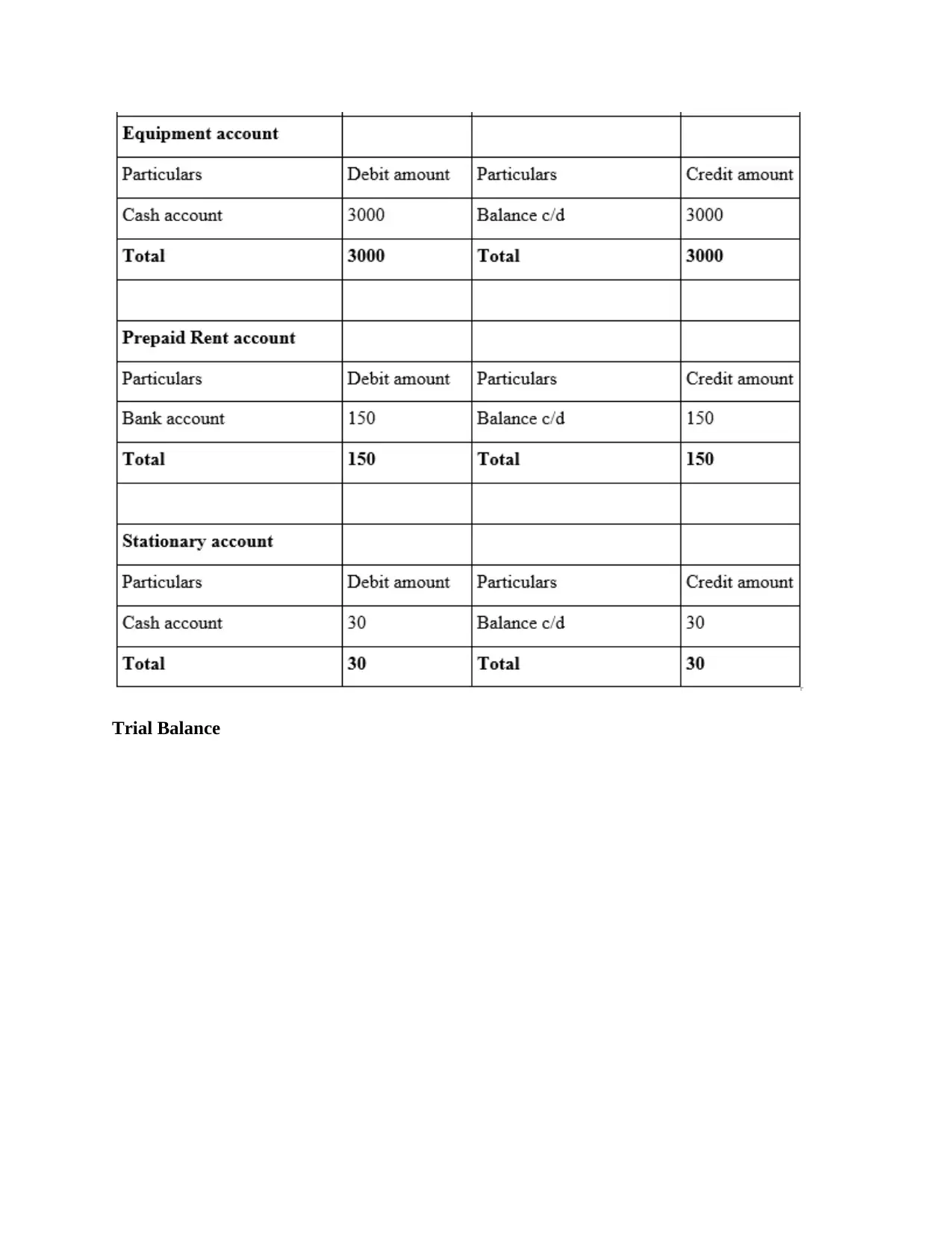
Trial Balance
Paraphrase This Document
Need a fresh take? Get an instant paraphrase of this document with our AI Paraphraser
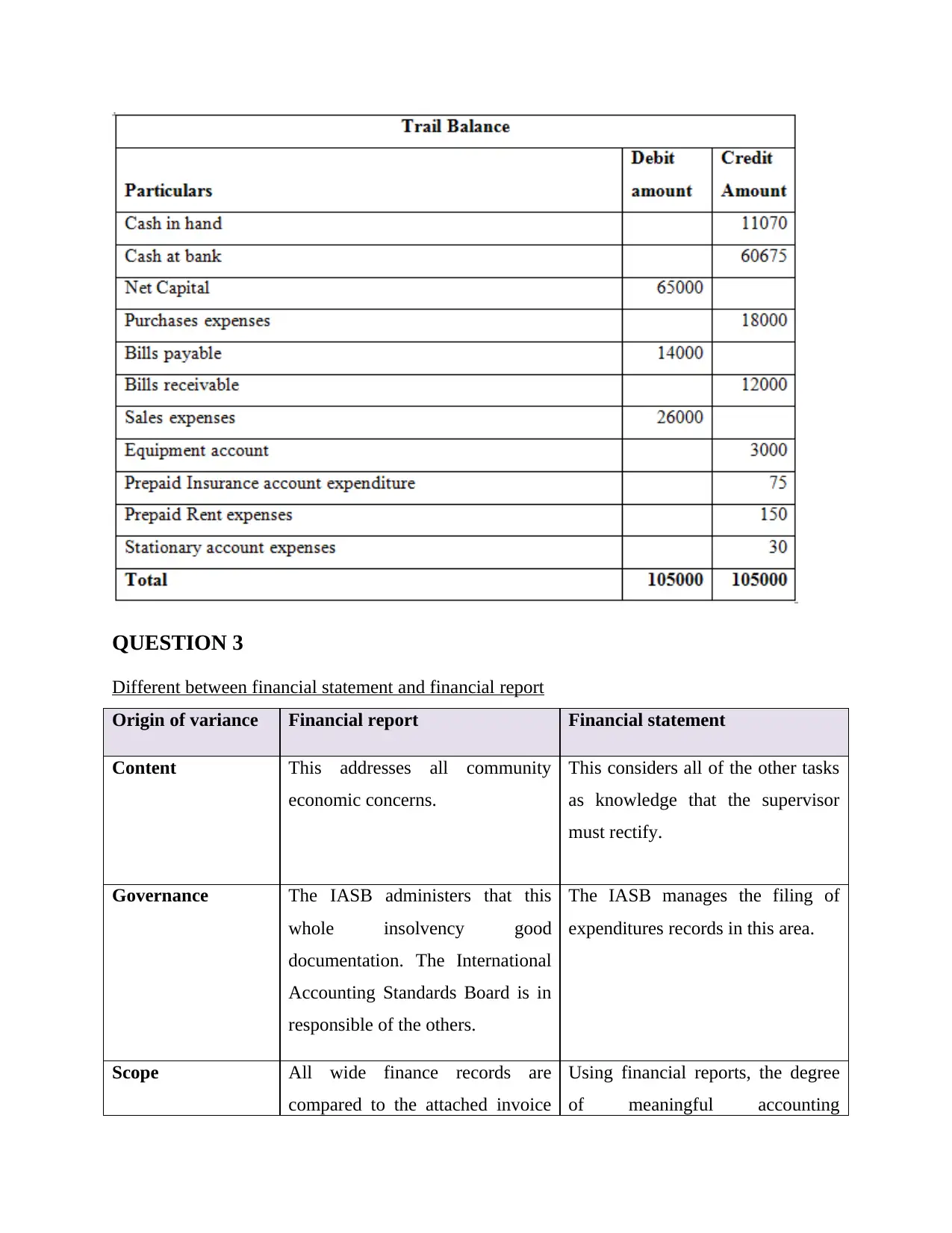
QUESTION 3
Different between financial statement and financial report
Origin of variance Financial report Financial statement
Content This addresses all community
economic concerns.
This considers all of the other tasks
as knowledge that the supervisor
must rectify.
Governance The IASB administers that this
whole insolvency good
documentation. The International
Accounting Standards Board is in
responsible of the others.
The IASB manages the filing of
expenditures records in this area.
Scope All wide finance records are
compared to the attached invoice
Using financial reports, the degree
of meaningful accounting
Different between financial statement and financial report
Origin of variance Financial report Financial statement
Content This addresses all community
economic concerns.
This considers all of the other tasks
as knowledge that the supervisor
must rectify.
Governance The IASB administers that this
whole insolvency good
documentation. The International
Accounting Standards Board is in
responsible of the others.
The IASB manages the filing of
expenditures records in this area.
Scope All wide finance records are
compared to the attached invoice
Using financial reports, the degree
of meaningful accounting
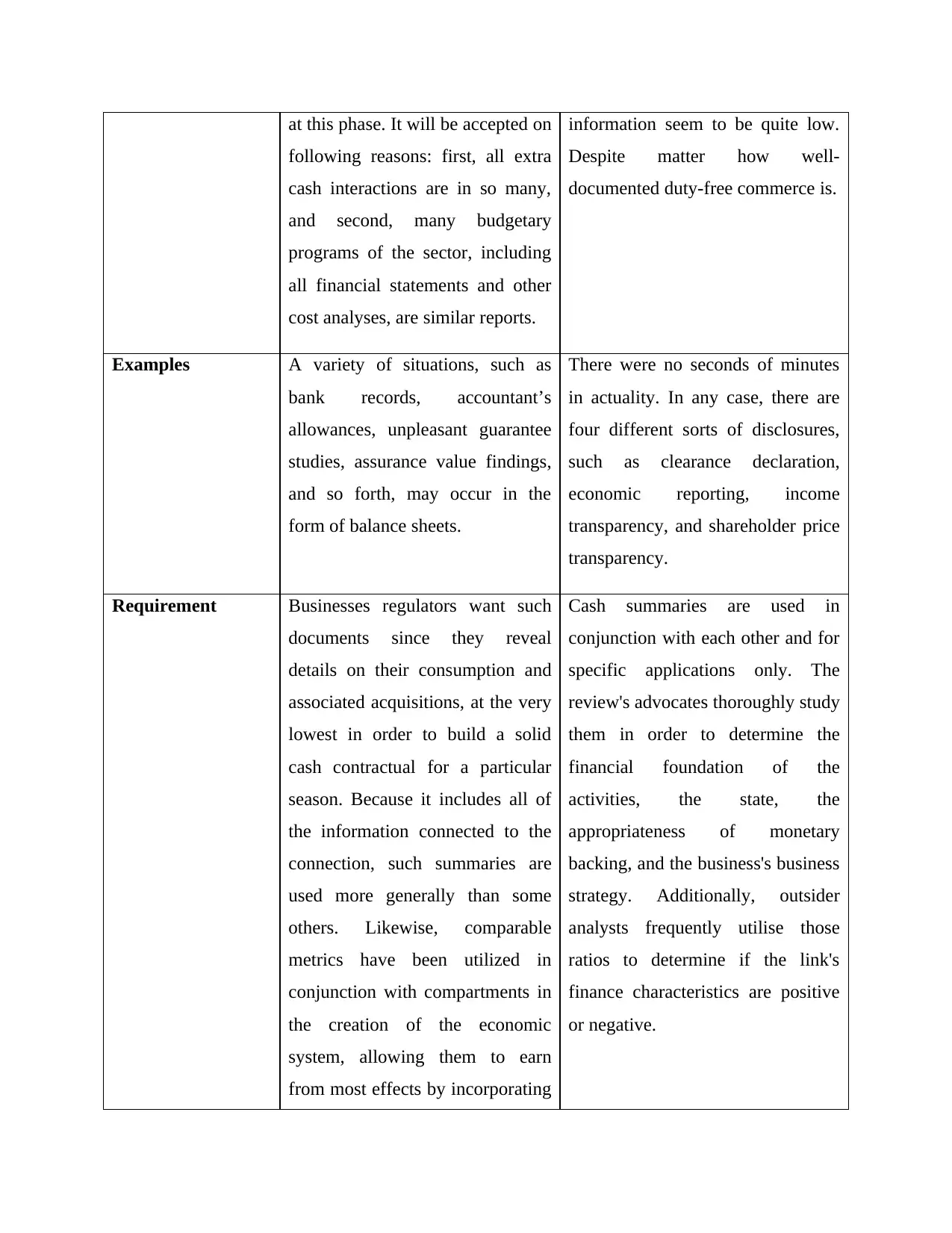
at this phase. It will be accepted on
following reasons: first, all extra
cash interactions are in so many,
and second, many budgetary
programs of the sector, including
all financial statements and other
cost analyses, are similar reports.
information seem to be quite low.
Despite matter how well-
documented duty-free commerce is.
Examples A variety of situations, such as
bank records, accountant’s
allowances, unpleasant guarantee
studies, assurance value findings,
and so forth, may occur in the
form of balance sheets.
There were no seconds of minutes
in actuality. In any case, there are
four different sorts of disclosures,
such as clearance declaration,
economic reporting, income
transparency, and shareholder price
transparency.
Requirement Businesses regulators want such
documents since they reveal
details on their consumption and
associated acquisitions, at the very
lowest in order to build a solid
cash contractual for a particular
season. Because it includes all of
the information connected to the
connection, such summaries are
used more generally than some
others. Likewise, comparable
metrics have been utilized in
conjunction with compartments in
the creation of the economic
system, allowing them to earn
from most effects by incorporating
Cash summaries are used in
conjunction with each other and for
specific applications only. The
review's advocates thoroughly study
them in order to determine the
financial foundation of the
activities, the state, the
appropriateness of monetary
backing, and the business's business
strategy. Additionally, outsider
analysts frequently utilise those
ratios to determine if the link's
finance characteristics are positive
or negative.
following reasons: first, all extra
cash interactions are in so many,
and second, many budgetary
programs of the sector, including
all financial statements and other
cost analyses, are similar reports.
information seem to be quite low.
Despite matter how well-
documented duty-free commerce is.
Examples A variety of situations, such as
bank records, accountant’s
allowances, unpleasant guarantee
studies, assurance value findings,
and so forth, may occur in the
form of balance sheets.
There were no seconds of minutes
in actuality. In any case, there are
four different sorts of disclosures,
such as clearance declaration,
economic reporting, income
transparency, and shareholder price
transparency.
Requirement Businesses regulators want such
documents since they reveal
details on their consumption and
associated acquisitions, at the very
lowest in order to build a solid
cash contractual for a particular
season. Because it includes all of
the information connected to the
connection, such summaries are
used more generally than some
others. Likewise, comparable
metrics have been utilized in
conjunction with compartments in
the creation of the economic
system, allowing them to earn
from most effects by incorporating
Cash summaries are used in
conjunction with each other and for
specific applications only. The
review's advocates thoroughly study
them in order to determine the
financial foundation of the
activities, the state, the
appropriateness of monetary
backing, and the business's business
strategy. Additionally, outsider
analysts frequently utilise those
ratios to determine if the link's
finance characteristics are positive
or negative.
⊘ This is a preview!⊘
Do you want full access?
Subscribe today to unlock all pages.

Trusted by 1+ million students worldwide
1 out of 27
Related Documents
Your All-in-One AI-Powered Toolkit for Academic Success.
+13062052269
info@desklib.com
Available 24*7 on WhatsApp / Email
![[object Object]](/_next/static/media/star-bottom.7253800d.svg)
Unlock your academic potential
Copyright © 2020–2025 A2Z Services. All Rights Reserved. Developed and managed by ZUCOL.





